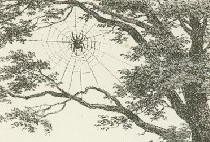Imitating Nature
Today, we try to copy mother nature. The University of Houston's College of Engineering presents this series about the machines that make our civilization run, and the people whose ingenuity created them.
People often ask me if invention copies nature. The answer's a surprise. We seldom manage to copy nature. She's too complex. Her secrets are too deeply buried. Our forbears were once in closer touch with organic nature. They knew the herbs of the forest and, without chemistry, they extracted medicines and processed chemicals from them. They used nature. But they made no attempt to copy her.
They might make ink from acacia tree gum, then extract coloring for it from the parasitic galls of an oak tree. Linseed oil, flaxen cloth or waxes -- tanning, smelting, or adding color to stained glass. It all reflected an intimacy with the tastes and smells of the forest. We used nature. We didn't try to copy her.
As we synthesize cloth, paper, medicine, and oils, each step leads us further from the product nature provided. Now we process natural oils into plastics, minerals into glass, and organic fibers and chemicals into paper. In the very simplicity of our processes, we overlook nature's exquisite sophistication.
That's especially clear when we try to copy animal functions. Two-legged, or bipedal, motion poses insurmountable feedback control problems, so we simplify it. We separate propulsion from locomotion. We fit wheels on an ox- or engine-driven vehicle. Only in the last 20 years have we managed to make crude six-legged walking machines. Artificial bipedal motion is still beyond us.
We did the same thing when we learned to fly. We couldn't combine lift with propulsion in a flapping wing. So we gave up, froze the wing in place, and drove the plane forward with a propeller. It was a crude solution for a hopelessly complex problem.
To invent the computer, we first had to despair of imitating the human brain. Now we very gradually try to endow our computers with the abilities that seem to lie within our own brains -- neural networks, parallel processing, and fuzzy logic.
When we discover a new drug or glandular secretion, we first try to synthesize it. Then we introduce it orally or intravenously -- not the way our own body would. Doctors and psychiatrists do repeated damage, along with much good, as they try to replicate the body's means for defending against disease and psychosis.
Another time, we'll talk about our attempts to copy the spider's web. Spider web strands have enormous strength and an array of qualities that we find in no manufactured material.
Technology's central task is expanding our reach -- letting us travel faster and farther, heating and cooling us, extending our minds and our capacity for self-repair -- pleasing our senses. And it always comes back to replicating what nature does more efficiently, and with layers of complexity that continue to baffle us.
I'm John Lienhard, at the University of Houston, where we're interested in the way inventive minds work.
(Theme music)
For the episode on spider webs alluded to in this episode, see Episode 1069.

Image courtesy of Special Collections, UH Library